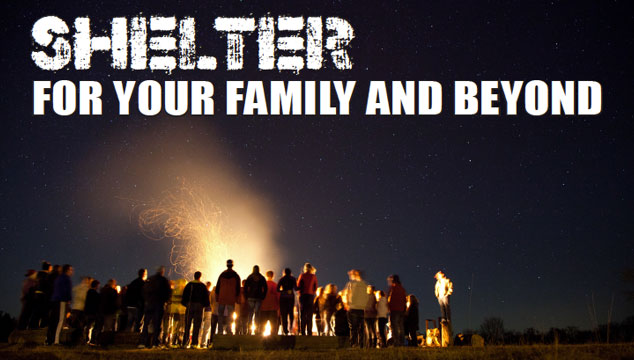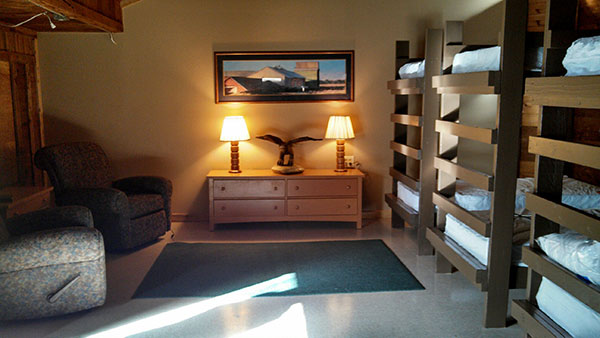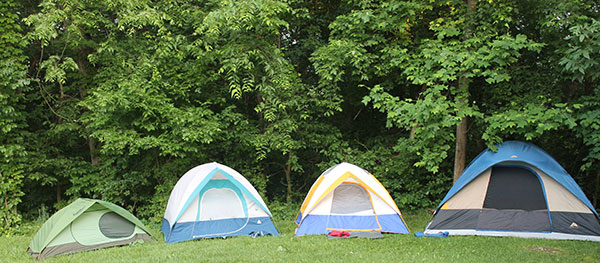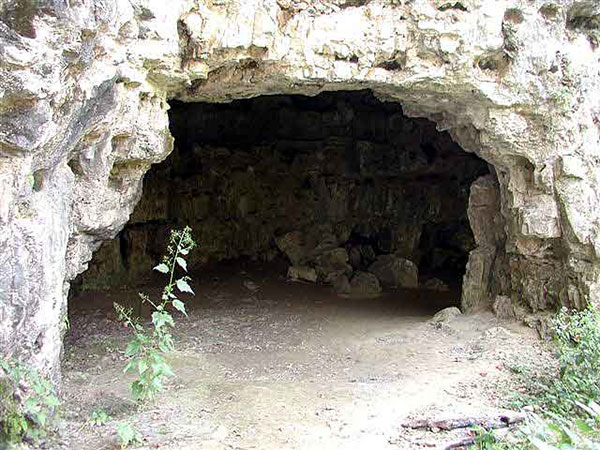
Like most survivalists, you’ve probably given plenty of thought to the things needed to care for your family in an emergency situation. You’ve considered the various SHTF scenarios that may occur and made plans for coping with the challenges each may present.
You’ve packed a bug out bag, familiarized yourself with the local lands, and learned to identify locally abundant food sources. You’ve invested thousands of dollars in survival equipment, taught yourself emergency first-aid, and stocked the basement with non-perishable foods.
Simply put, you are ready to protect and care for your family should the unthinkable occur.
But, as is so often the case, the most difficult challenges are those that are unforeseen. While you may be prepared to take good care of your family, plans may go right out the window if other individuals or families appear during the middle of a survival situation.
At this point, you’ll have to reevaluate your plans, supplies, and entire approach. One of the most important things you’ll need to do is figure out how to accommodate everyone. If you’re living in the wilderness, the shelter will need to be built big enough for the whole group. This is different than making one only large enough for your nuclear family.
Below we’ll talk about some of the things to keep in mind when hosting unexpected visitors or when you must construct a large shelter for multiple families. This way you’ll be prepared to care for your family, no matter who stumbles across your path.
Accommodating Unexpected Guests
It wouldn’t be unusual to have unexpected (and uninvited) guests show up at your home during a SHTF scenario. This is especially true for those who are well-known for being prepared. Your extended family and neighbors aren’t going to head to Lay-About Lou’s house during an emergency, they’re going to head for Prepper Paul’s house.

If your entire extended family shows up on the doorstep, you’ll need to find physical space for them. This not only means finding them a place to sleep but also providing enough elbow room to keep everyone comfortable. You’ll also need to find places for everyone’s belongings.
Planning for such contingencies ensures you can give a helping hand to loved ones without putting your immediate family at risk. This primarily means coming up with a plan to deal with some of the most likely problems to present themselves.
Some of the best ways to do so include:
- Make use of as many rooms as possible. You’ll quickly run out of bedrooms while offering accommodations to large groups. Be sure to take advantage of other rooms in your home such as dining rooms, offices, and dens. You can even use the space in large closets or laundry rooms.
- Encourage people to congregate outdoors whenever possible. Even if you only have a few visitors, everyone will remain more comfortable if outdoors as much as possible. Plus your house will withstand less wear and tear. Consider doing things like dinner prep out on the patio or back porch. Always encourage children to play outdoors (with supervision).
- Set up tents or shelters. At a certain point, you’ll run out of room for people. When this happens, you can provide your visitors with tents. Although it’s always preferable to stay indoors at night, there is still value in being adjacent to a home in such situations. It pays to have plenty of cordage and tarps on hand to rig makeshift tents up with ease.
- Emphasize ventilation. Even if you still have electricity and running water, your home will begin to smell somewhat ripe after spending several days indoors with a group of people. Try to limit this phenomenon by keeping as many doors and windows open as you can. This isn’t always possible in cold weather but should be standard practice in the summer.
- Take advantage of the vertical space in your home. It won’t take long to use all of the available floor space in your home, so you’ll want to stack items as much as is possible. Just be sure to keep safety in mind and take the time to stack things carefully.
- Keep high value items indoors. You’ll often find it helpful to store many of the belongings and supplies of your visitors outdoors. Just be sure to keep the most valuable, delicate, and perishable items indoors. This will allow you to keep such items safe from the elements, wildlife, and thieves.
- Establish ground rules at the outset. It’s important to be a gracious host and to make your guests comfortable as you’d want the same from them. But it’s your home and you’re the one calling the shots. Talking about ground rules proactively can help to avoid conflicts and misunderstandings.
- Use the thermal characteristics of your home to your advantage. Your home likely has places that remain a little warmer or cooler than others. Try to use these opportunities to keep everyone comfortable. For example, if some of the guests are sick they may appreciate the warmest nooks and crannies of your home.
- Set up curtains or barriers to provide some semblance of privacy. Even though your guests may be sleeping in relatively cramped quarters, you can make them more comfortable by erecting barriers and screens wherever appropriate. These barriers needn’t be elaborate either, simply string up some cordage and clip some sheets or curtains to it.
- Consider enclosing exposed decks to provide more shelter. Rig a roof for a deck, or similar area, if you’ve run out of space indoors. This will generally be easier than making individual shelters and will be more comfortable to use as well. Just be sure to angle the tarp, or whatever you’re using for the roof, at an angle pointing away from your home.
- Use the gear your guests bring along to help insulate the home. If power is lost in the winter, you’ll be battling low temperatures constantly. One way to help keep the home as warm as possible is by blocking some of the windows with the gear your guests have brought with them. Use care to avoid creating a fire hazard, obviously don’t block exits, but try to keep items in front of as many windows as possible.
- Be sure that your guests know any pertinent safety information. Everyone’s home is set up differently. You know the best exit to use in case of a fire or how to light the pilot on your finicky range but guests won’t have that luxury. Therefore, you’ll want to cover these things with at least one member of every family that shows up on your doorstep.
Building a Shelter: Plan of Action
Each situation will differ in many ways, requiring different strategies and solutions to the challenges faced. However, there are a few basic things you’ll need to do whenever it’s necessary to construct a shelter for several people.
Generally speaking, you’ll need to complete the following four steps in these types of situations:
1. Assessment
The first thing you’ll want to do in any challenging scenario is to take stock of the situation. Then you’ll be able to calmly address each aspect of the challenge and make the best plan of attack.
This requires you to ask yourself a series of questions:
→ Where will you construct the shelter?
Unless you’re going to go crazy and build a shelter into the side of a hill, try to establish your shelter on flat ground. It’s important to avoid building the shelter in a floodplain or beneath a dead tree, which may fall onto your shelter in strong winds.

You’ll also want to consider the location with respect to trails and water sources. It’s better to avoid having to walk too far to access water or other resources.
→ What type of climate and weather will confront you?
While you can’t accurately predict the weather, it’s a good idea to plan for the most likely conditions. This will help drive a lot of the decisions you’ll make during the design and construction phases.
For example, you’ll want to consider whether it makes more sense to construct the shelter under the tree canopy or out in the open. Trees will help shield your shelter from the rain, snow, and wind. Although keep in mind that shelters built in open spaces will heat up more quickly in the morning sunshine.
The weather will dictate how much insulation, how watertight the roof must be, and whether or not a fire pit is needed inside the structure.
→ What types of materials do you have at your disposal?
The materials available to you will play a large role in determining the type and size of the shelter.
Most shelters will be primarily constructed from logs, which are typically ubiquitous in forests and other wilderness areas. You’ll also need plenty of cordage for lashing everything together. Make cordage from grapevine and similar natural materials unless you have an abundance of paracord or twine in your bug out bag.
If you’ve packed your bug out bag well, there’ll be a big tarp or sheet of plastic to use over the roof. You can make a relatively waterproof roof with only natural materials but a tarp makes the task much easier.
→ How many people must the shelter accommodate?
The size of your group will determine the necessary size of the shelter. A larger shelter is needed to accommodate a dozen people than you would to house half as many.
There aren’t any hard-and-fast rules regarding shelter size. You’ll have to adapt to the space available and materials on hand. However, it’s wise to make shelters a bit small during cool weather or a bit large during warm weather. These adjustments help to keep the internal temperatures more comfortable.
→ How long must the shelter last?
The longer you’ll use the shelter, the more investment and effort in the construction process is needed to ensure it lasts. Conversely, if you’re only going to need the shelter for a night or two than your time will be better spent on other tasks.
You must always be sure that your shelter is safe and structurally sound. Don’t spend time on minor details if you plan to change locations in the next few days.
2. Planning
Now that you understand your assets, liabilities, and challenges you can begin sketching out a plan.
Don’t hesitate to draw your blueprints on the ground if you like. This can be especially helpful when building complex shelters or when several people will be contributing to the construction process.
Also, be sure to account for the local trees, rocks, and other objects in the vicinity when devising your plan. You’ll have to allow for these obstacles and may even find it helpful to incorporate them into the design. For example, a sturdy horizontal tree branch may make a great support for the shelter’s roof, while a large rock will help retain heat from the fire.
3. Construction
Once you’ve decided on a plan, begin constructing your shelter. It’s always wise to begin by gathering any materials necessary, such as logs or vegetation, then set everything up neatly. This will make the process go much more smoothly and prevent you from having to stop for more supplies.
Enlist plenty of help when building the shelter, but be sure to appoint a “foreman” who will lead the process. This will prevent many of the squabbles and disagreements which are sure to occur in such a stressful situation. It’s often helpful to break the group into teams, with each focusing on a distinct task.
For example, one group of people may be responsible for preparing logs, another could be tasked with raising the logs into position, and yet another would be responsible for lashing the logs in place. This will generally help make the project proceed more smoothly.
4. Adjustments
A survival shelter rarely works the way you intended on the first try. You’ll have to spend a bit of time tweaking the shelter’s design and construction to address problems.
Look for things like holes in the roof which may allow rain or snow to enter the shelter. Take a moment to assess the structure’s stability, you don’t want it to collapse in a strong wind. You should also try out the entrances and exits to ensure they’re large enough to allow people to pass through easily. It makes sense to have the entire group enter the structure to verify that it’s large enough for everyone to use at the same time.
Always fix any of these or other problems before considering your shelter complete. Don’t hesitate to make adjustments in the coming days, if necessary.
Building a Shelter: Choosing the Right Design for Your Needs
There are a variety of different shelters you can make to accommodate a large group of people. Each style is best suited for a different set of circumstances. Some of the most popular styles, and the situations to which they’re best suited, are listed below.
A-Frame
A-frame shelters are rather easy to construct and they usually shed water very well if fitted with a plastic or tarp-covered roof. A-frames remain pretty cool in warm weather due to the ample headroom they provide. They’re roomy enough to allow you to stand in the middle.
However, A-frame shelters don’t provide the most effective use of space or materials. Wind can pass through them quite easily and makes them a bit chilly in the winter. You can use green boughs to make a roof for an A-frame shelter but a tarp will make it more waterproof.
Best Suited For: A-frame shelters are a good option for very large groups, especially those who don’t need the shelter to last for a very long time.
Log Cabin
A log cabin style shelter is one of the most durable and comfortable styles you can construct but require a great deal of time to build. Additionally, you’ll need to collect and prepare a large number of logs and branches to build such a structure. Accordingly, they aren’t the best option for very large groups or situations in which shelter is only needed for a brief period of time.
But while they aren’t quick or easy to build, log cabin shelters are typically quite effective. They’ll keep you very warm in the winter or cool in the summer. Build a slanted roof to help keep rain from collecting on top and it’s definitely advantageous to use a tarp to keep it as waterproof as possible.
Best Suited For: Log cabin style shelters are best suited for medium-sized groups that will be using the shelter for an extended period of time.
Dugout
If it’s a hilly region, you can often make an excellent shelter by building it into the side of a hill. This will alleviate the need to build an entire wall, it will reduce the required size of the side walls, and it will provide excellent insulation against the cold. Particularly if the prevailing winds come from the direction of the hill.
To build such a shelter, you’ll need to excavate a significant amount of soil from the hillside to create a back wall. The roof timbers can then be hammered directly into the hillside soil and supported by vertical supports at the front of the structure. From this point forward, finish the shelter as you would a log cabin style shelter.
Best Suited For: Dugout style shelters are remarkably sturdy, so they excel in places with strong winds. They’ll keep you much warmer than most other types of shelter. Most appropriate for medium-sized groups.
Lean-To
A lean-to is the simplest type of shelter you can construct, but they’re often quite effective if designed well. A lean-to essentially consists of a single panel leaned up against a sturdy object, such as a tree or boulder, and lashed into place.
Lean-to shelters can keep you dry even in the heaviest downpour if they’re well made. Although it will always be easier to keep the roof waterproof if you have a tarp. Lean-to shelters won’t keep you very warm, nor will they last very long. However, they can be built very quickly if stormy weather threatens.
Best Suited For: Because they are very simple to build, you can make a lean-to shelter large enough for just about any group. You can build one relatively quickly, especially if multiple people help with the construction process. However, they are a poor choice for especially cold climates or places with strong wind gusts.
Commandeering Existing Shelters
Sometimes you may be able to find an existing shelter that is large enough to accommodate a large group. This is almost always the best possible turn of events, as it will alleviate the need to construct one or cram people into your own house.
Caves

Caves can be found in many forested areas and will often offer some of the best shelter for miles. It can be difficult to find caves large enough to accommodate a large group of people but you’ll frequently find small caves in close proximity to each other. This will allow the group to stay in close contact and still access shelter.
Caves frequently harbor wildlife and other dangers, so always use caution when entering them. Don’t drink any water you may find in the cave as it’s likely to be contaminated. Do your best to light the area to prevent people from falling or bumping their head on low-hanging rocks.
Man Made Structures
Cabins, ranger stations, storage buildings, and barns are found throughout rural and suburban areas, You may stumble across a man made structure during a survival situation. These types of structures will almost always offer the best possible accommodations for a large group. They may even offer creature comforts, such as running water and wood-burning stoves.
It’s always important to be cautious when entering a manmade structure, as it may have occupants who won’t take kindly to trespassers. Abandoned structures are obviously preferable but in a survival situation you may have to do what is necessary to access the building. Always attempt to barter or negotiate a peaceful arrangement if possible, but should your family’s safety be in jeopardy, you may have to take the structure by force.
Assorted Tips for Sheltering Large Groups
Whether you’re trying to accommodate people in your home or are forced to build a shelter in the wild, each survival situation presents its own unique challenges. No matter what the details of your situation are, there are a few things you can do in most cases to help alleviate friction and stress.
As much as is possible, put the following tips into practice:
- Diffuse any confrontations as quickly as possible. Tempers will typically be short in survival situations. Because everyone will be trying to keep their own family’s best interests in mind, minor disagreements can quickly escalate. Encourage feuding parties to separate for 10 or 15 minutes, calm down, and then revisit the problem with clearer heads.
- Set up a rotating schedule to ensure everyone gets to enjoy limited resources. For example, if one portion of the home or shelter is obviously superior to the others, ensure that each family gets to take a turn enjoying that area. Similarly, you’ll want to divvy up bathroom time to each family.
- Make a master list of your assets. One of the advantages of teaming up with other survivalists is that you’ll all benefit from a greater assortment of tools, equipment, and supplies. While personal property rights should still be respected, it’s wise to list the various items available. The group can then make the best use of the things at their disposal.
- Take turns handling chores. It’s important to ensure that nobody feels slighted or saddled with an unfair workload in a survival situation. You’ll want to be sure that everyone takes a turn with the basic chores. For example, each family should take a turn collecting firewood, assisting with the cooking chores, and scouting for resources.
- Prioritize the care of the young, old, or injured. Most large groups will contain both healthy, able-bodied adults and an assortment of other people who will require a little more help. Be sure that those who need extra help are adequately assisted and that the burden of this help is split equally amongst the healthy members of the group.
- Establish a daily check-in time. If your group will be splitting up frequently to tend to various tasks, it’s wise to establish a routine check-in time. All members of the group should be counted. This will help ensure that anyone who becomes lost will be noticed as quickly as possible. It may even be preferable to establish two check-in times, one in the morning and one at night.
- Build multiple fires if you are living outside with a large group. A fire can help fight off the winter chill and keep everyone more comfortable. A single fire may not be the most effective way to keep everyone warm in all situations. Multiple fires will allow people to spread out a little more. Plus multiple fires offer some insurance, if one of the fires goes out you can re-ignite it with the other fire.
- Play to the strengths of the group. While it’s important to make sure that everyone takes their turn performing basic chores, it always makes sense to leverage the individual skills of the various members. For example, anyone with a construction background should spend the bulk of their time constructing and caring for the shelter or doing maintenance tasks for your home. Similarly, if one of your members is an excellent hunter, they should spend the most time trying to acquire food for the group.
- Try to remain as calm and patient as possible. Any type of survival situation is sure to be stressful, and this is especially true of those that involve a group of strangers. Just try to keep an even keel during the ordeal and remember that the other members of the group are struggling with the same challenges you are.
- Don’t be afraid to break with the group if necessary. Multiple families working together improves your chances of surviving a difficult situation. However, there may come a time that it’s better for your family to head off on its own or kindly ask your visitors to depart. While you’ll want as many people to survive the ordeal as possible, always keep your family’s needs at the forefront.
Final Thoughts
Keep in mind that more people can mean more resources. Also, family members and neighbors may show up whether you planned for them or not. You don’t want to be forced into a situation where choosing between the right action and endangering your resources is necessary. With some planning and strategy, your current plans can be made to accommodate other families.
